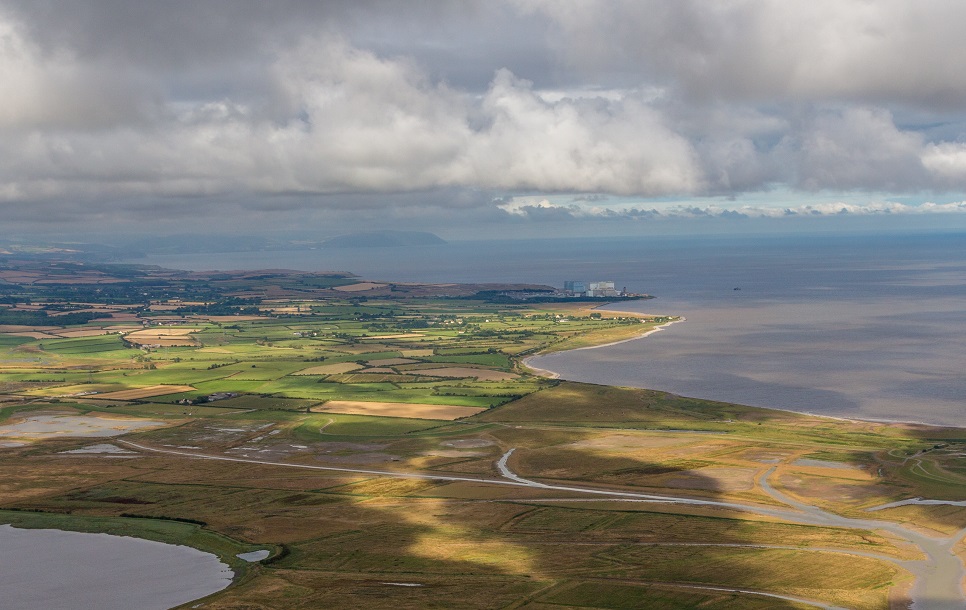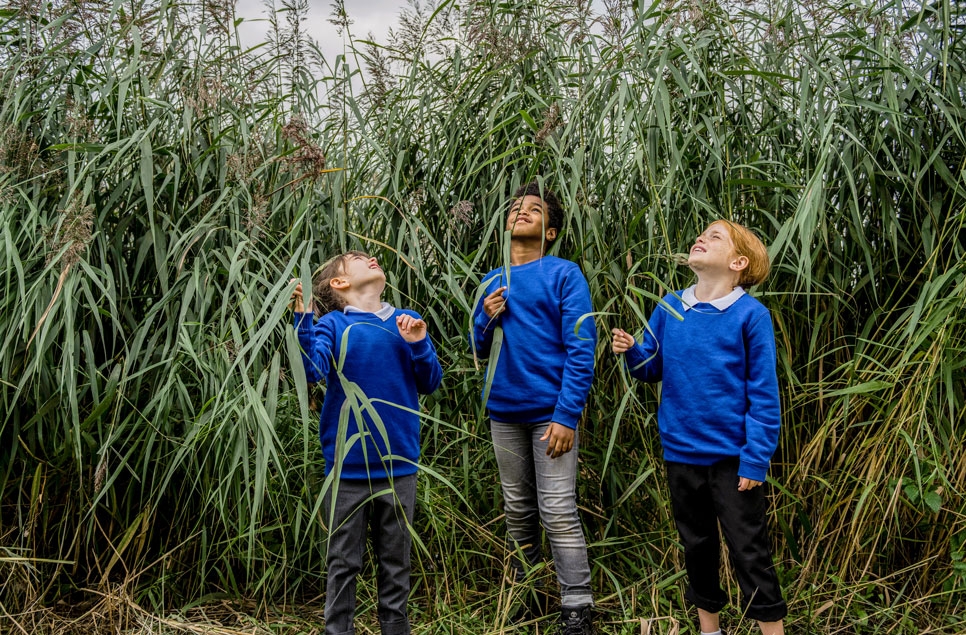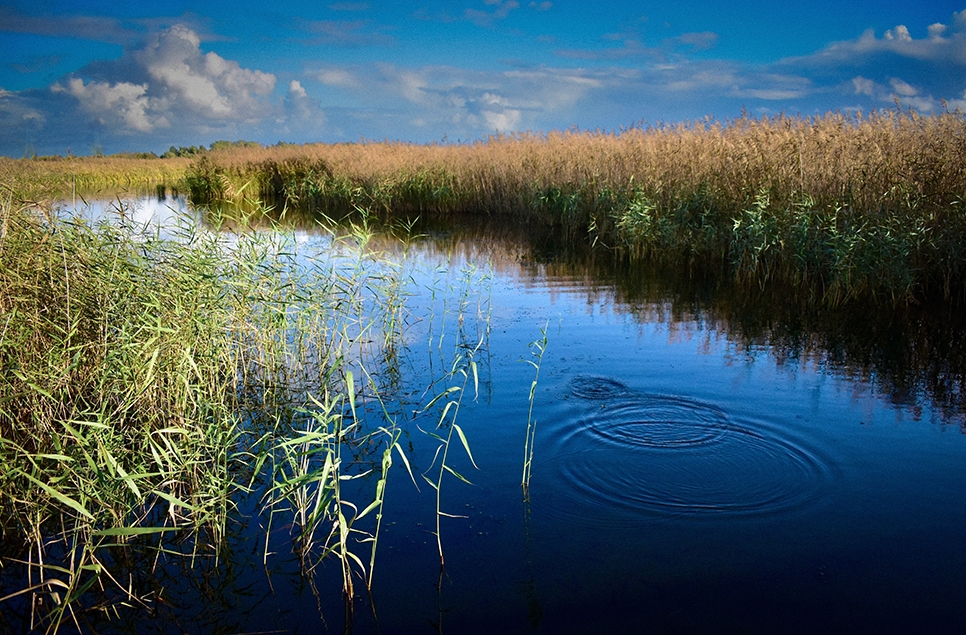Fact file: Saltmarshes and mudflats
Saltmarshes and mudflats are tidal wetlands that are intermittently submerged with water, forming in sheltered coastal areas. They have a huge amount of biodiversity, and are valuable to humans as efficient 'carbon sinks' and flood protection.
All around our low-lying coasts, in that flat stretch of land before the sea you’ll find one of nature’s wonders, known as salt marsh or coastal saltmarsh.
Hidden for part of the day by salt water, these areas, part-land, part-water, provide an incredibly rich and diverse habitat to a range of specially adapted species, some which exist only in those salt-rich habitats. And they don’t just have value as biodiverse habitats – they’re also really effective at carbon storage from the Earth’s atmosphere, and locking it down into ‘carbon sinks’.
WWT's Director of Conservation, James Robinson, sums up the importance of saltmarshes for slowing down climate change:
Put together, peatlands and coastal wetlands such as mangroves, saltmarshes and sea grass beds store more carbon than all of the world’s forests combined.

What are saltmarshes?
Saltmarshes of some shape or description can be found in most parts the world where there’s low-lying land and a temperate climate. They're usually just one part of a complex system of larger wetlands with a variety of physical landforms and ecosystems.
Saltmarshes form in sheltered places by the daily movements of salt water over the land, influenced by both the tides and the seasons. The water flows in from the sea, covering previously empty mudflats, and as it recedes, it leaves behind it fine sediments and nutrients. Then small plants known as ‘pioneer’ species take root, followed by larger plants and organisms. These plants have their own levels of tolerance of salt and amount of water coverage, and so within the saltmarsh itself there are significant variations in the type of plants that live there.

What lives in a salt marsh?
When saltmarshes are allowed to form naturally, they provide a nursery for fish, as well as a refuge for many mammals and birds. Glassworts and cordgrass plants are able to quickly colonise new saltmarsh and are followed by a succession of other plant species. These plants are useful as they increase the amount of sediment that is able to be deposited on the land, provide food for primary consumers like fish and slow the movement of water back into the ocean.
Saltmarshes are oases for both resident and migratory birds like egrets, dunlin and spoonbills, who use the high grasses as cover in which to raise their young and the mudflats as sources of fish, molluscs and insects. Long-billed wading birds have specially adapted bills with ends that can flex and probe the mud, using masses of mini sensors to pick up pressure waves from bivalves and molluscs. And it's not just the birds. Some invertebrates are adapted to feed on just one kind of saltmarsh plant, such as the sea aster mining bee, a late emerging bee that times its flight with the blooming of this plant in East Anglia and the Thames estuary.
Most saltmarsh ecosystems are not dynamic, are often complex and therefore fragile, with even minor changes to one element enough to upset the balance of life that it can sustain.

Saltmarsh benefits
Probably one of the least know facts about saltmarshes is that they can significantly help us address climate change by being the most effective form of storing carbon per hectare than many other habitats – acting as giant ‘carbon sinks’. James Robinson explains:
When saltmarsh plants die, rather than decomposing and releasing their carbon into the atmosphere, they become buried in the mud. As sea levels rise more sediment layers get buried and more carbon gets locked beneath the mud.
As well as the benefits to the natural environment of these fragile ecosystems, they can play a significant role for people. The habitats, at the edge of the sea can minimise and soften out tidal surges, so protecting our shorelines.
Saltmarshes also act like huge sponges, absorbing and cleaning farming runoff, by filtering-out herbicides, pesticides, and heavy metals, as well as excess sediments and nutrients.
In times of heavy storms, hurricanes or high tides, they provide a buffer, reducing the strength and destruction of the incoming water and protecting the worst of the storm hitting populated areas further inland. Plant growth on salt marsh also slows the flow of water back into the ocean.
Rainforests have long been described as the ‘lungs of the planet’. Quite rightly, their destruction in massive forest fires in the Amazon attracts national media attention and uproar, yet the plight of the loss of precious salt marshes goes largely unreported. Estimates show that we have lost over a third of our wetlands, of which salt marshes are an important constituent, in the last 50 years.

Why saltmarshes are threatened
Saltmarshes the world over face many threats. They are subject to natural threats such as globally rising sea levels, and increasingly frequent, and damaging storms. But man-made impacts are having significantly negative impacts on our salt marshes.
Our desire for more and more ‘productive’ land has meant that the world-over, salt marshes were drained to be ‘reclaimed’ from the sea. Whether to be used as farmland, as the early Romans did, or to expand our cities and create land for airports, coastal salt marshes and the species that rely on them are under increasing threat.
Time is running out - but there is hope
Despite all of this, there is some good news. Unlike rainforest, which can take centuries to return to their original state, saltmarshes reform and start providing valuable habitats for a number of species within a matter of a few years.
One such example is the WWT-managed creation of a 500 hectare reserve at WWT Steart Marshes in West Somerset. Once it was an area of regularly flooded and largely unproductive farmland, it and the local communities were at the mercy of constant flooding. The Environment Agency and WWT developed plans to combat this cycle that radically transformed the ever-changing coast to benefit both people and wildlife.

By creating a breach in the sea wall, the land at Steart was intentionally flooded, creating saltmarsh and other habitats. The area has already attracted otters, egrets, owls and spoonbills and avocets were recording as breeding on the land for the first time. Economically, the reclaimed farmland is also home to locally produced salt marsh lamb and beef production, whilst sustainable commercial fish nurseries are found in the creeks and shallows.
Time is not on our side, but there is hope that by understanding the ecosystems of saltmarshes and how to recreate them, over time we can start to reverse their destruction and decline.



